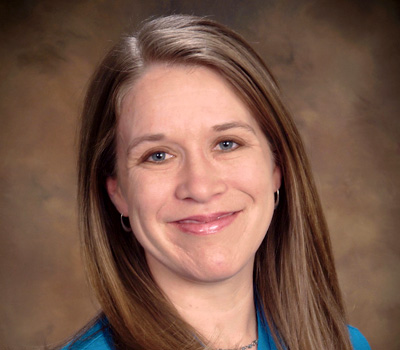How analytical and materials chemistry has societal, environmental, and medical applications
While our understanding of the biological processes of the human body is vast, researchers are still uncovering basic principles that are leading to advancements in health, inquiry, and technology. Dr. Christy Haynes, of the University of Minnesota, is an exemplary example of the ways in which seeking to understand basic scientific concepts is leading researchers towards important tools for diagnostics and therapeutics for a variety of illnesses ranging from rare blood diseases to cancers. Dr. Haynes has specifically focused her research on exploiting analytical and materials chemistry principles to create new measurement methods, open new therapeutic avenues, and ensure safe use of new materials classes.
Dr. Haynes and her group use nanoparticles to try to make therapeutics or microelectrodes to measure fundamental properties in cells that are involved in diseases while ensuring that environmental sustainability remains a priority in the creation of such technologies. Therefore, her research has medical, environmental, and societal implications including: informing drug design to avoid unwanted blood clots, introducing entirely new modalities to treat cancer, sensing biological analytes within the complete matrix of human blood, informing how to use the new class of nanomaterials without causing environmental harm, and educating researchers who will continue to advance towards scientific discoveries.
Current projects include:
-
Revealing critical behavior in blood platelets: Platelets are critical actors in making our blood clot when it's needed and when it's not. This process is driven by chemical messenger molecules secreted by and to the platelets. Dr. Haynes' research is demonstrating a way to monitor the delivery of these chemical messengers from individual platelets as it happens. This yields critical fundamental information about platelets, potential therapeutics, and what goes wrong in blood disorders.
-
Designing multifunctional therapeutic nanoparticles: The Haynes Group is a leader in creating nanoscale silica nanoparticles that have the potential to target cancer cells and induce cancer cell death through a combination of drug delivery and application of local heating.
-
Designing biosensors that work in blood: The Haynes Group has created biosensors that work either in vitro (outside the body) or while suspended in whole human blood. These sensors give unique "molecular" signatures for target analytes, opening up the opportunity for in vivo sensing of a wide variety of small molecule or large biomolecule/protein analytes.
-
Environmental sustainability: The Haynes lab is interested in the fundamental materials properties that will make nanoscale materials safe in both physiological and ecological systems. Dr. Haynes develops materials and uses novel measurement methods to create a design feedback loop so that this exciting class of materials can be used sustainably.
Bio
Website: http://www.chem.umn.edu/groups/haynes/
Christy completed her undergraduate work at Macalester College in St. Paul, Minnesota (1998) with a major in Chemistry and minors in Mathematics and Spanish. Christy's doctoral work was done atNorthwestern University in Evanston, Illinois (2003) under the direction of Richard P. Van Duyne. Her doctoral thesis title is, "Fundamentals and Applications of Nanoparticle Optics and Surface-Enhanced Raman Scattering." Before arriving at the University of Minnesota, Christy performed postdoctoral research in the laboratory of R. Mark Wightman at the University of North Carolina, Chapel Hill (2005). Her efforts in the Wightman lab focused on applying microelectrode amperometry to probe single cell exocytosis.
Dr. Haynes remembers first being inspired by the work of chemists because of their ability to transform things to make them more useful or safe. This inspiration continues to motivate her towards applications that will affect society. Her interest in the fundamentals of basic research is therefore driven by the possibilities of application for day-to-day activities.
In the News
Publications
Videos
Awards
Taylor Award for Distinguished Research from the University of Minnesota, 2014
Kavli Foundation Emerging Leader in Chemistry Lecture, 2013
Pittsburgh Conference Achievement Award and One of the "Brilliant 10" chosen by Popular Science Magazine, 2012
Joseph Black Award from the Royal Society of Chemistry, 2011
Alfred P Sloan Fellow: Arthur Findeis Award, 2010
for Achievements by a Young Analytical Scientist from the American Chemical Society Division of Analytical Chemistry


